10 Alternatives of Stable Diffusion
Explore the top 10 stable diffusion alternatives like DALL-E, MidJourney, and CLIP. These advanced AI models offer diverse capabilities for text-to-image generation, catering to industries ranging from creative arts to machine learning.
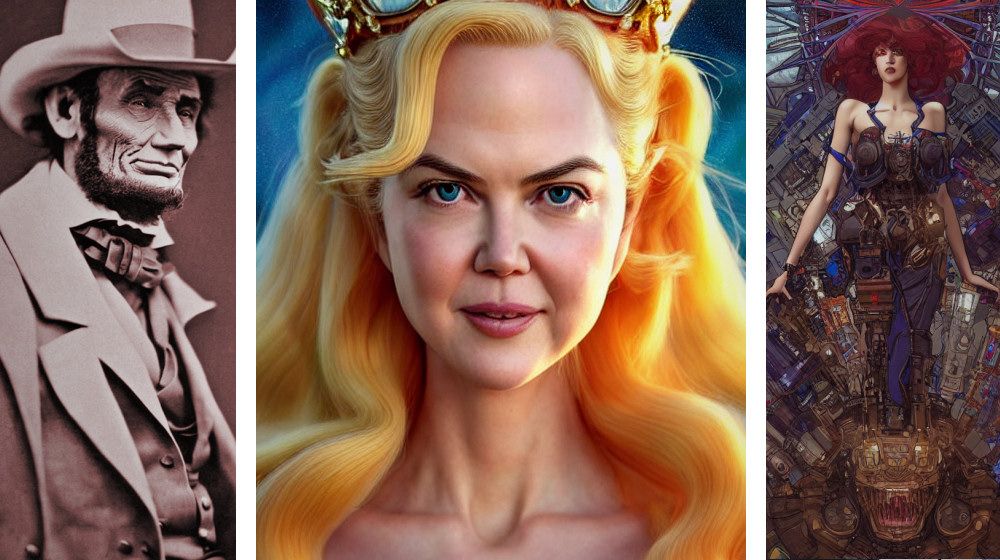
As text-to-image generation platforms continue to evolve, businesses are increasingly turning to these advanced AI-powered technologies to enhance creative workflows, streamline content creation, and deliver more engaging visual experiences for their audiences.
Though there are various powerful tools available today, Stable Diffusion is considered one of the most sought-after image-to-text solutions.
Stable diffusion has become a potent machine-learning technique, especially in the image and natural language processing areas.
However, numerous alternatives to stable diffusion can now be utilized for a range of tasks due to the field's quick rate of invention.
In this blog, we will be discussing the top 10 alternatives to stable diffusion, each with special advantages and uses.
Join us as we explore the most cutting-edge machine-learning optimized stable diffusion alternatives, including GANs, VAEs, and DALL-E.
What is Stable diffusion?
Stable Diffusion is a text-to-image model using AI capabilities to turn any text into realistic accurate visuals. It is a potent open-source model that generates images using diffusion models.
This tool is an excellent substitute for other image-generating programs like Midjourney and DALL-E 2 because it is made to produce detailed images based on text descriptions.
It is an advanced and creative text-to-image model that generates images from text using diffusion model 1. An online API for Stable Diffusion is available, and it may be used with an API on Replicate.
One of the main advantages of the Stable Diffusion model is its ability to handle complicated, high-dimensional data.
They excel at jobs like image and video processing because they can learn from input that has a lot of features or is extremely changeable.
Due to its capacity to produce varied and realistic results, Stable Diffusion has been more and more well-liked in recent years.
For example, Stable Diffusion models have been used to produce visuals that correspond to texts or text-to-image production.
Overall, Stable Diffusion is a powerful tool in the field of machine learning, with a wide range of applications and potential for further innovation.
Capabilities and Limitations of Stable Diffusion
Here are some limitations of Stable Diffusion based on customer reviews and industry insights:
- Needs Powerful Hardware: Stable Diffusion requires strong computers, often with high-end GPUs, to run smoothly. This makes it expensive and slow, especially for large projects or real-time applications.
- Quality Is Inconsistent: The quality of images created by Stable Diffusion can vary. If the input images are unclear or have too much noise, the output may look blurry or unrealistic.
- Limited Editing Options: Stable Diffusion is better at generating new images than editing existing ones. It’s not as effective for tasks like removing objects from an image or making detailed edits.
- Hard Time with Complex Images: When it comes to creating images with lots of objects or intricate details, Stable Diffusion can struggle, often producing simpler or less realistic versions.
- Risk of Bias: Stable Diffusion can pick up biases from its training data, which may lead to outputs that unintentionally reflect stereotypes or other unwanted themes.
- Requires Fine-Tuning for Specific Tasks: For certain tasks, Stable Diffusion needs a lot of adjusting to produce accurate results, which can be time-consuming and costly.
- Hard to Understand How It Works: Stable Diffusion functions as a “black box,” meaning it’s hard to understand how it creates images. This lack of transparency can be a problem for industries that need clear, interpretable results.
- Depends on High-Quality Data: The model’s performance relies heavily on the quality of the training data. Poor-quality data can lead to low-quality outputs.
These limitations show why some companies might look for other tools that are more affordable, easier to control, or better for specific needs.
Top 10 Stable Diffusion Alternatives
Stable diffusion is a powerful machine-learning model that has been used for a wide range of applications, including text-to-image generation.
However, there are several stable diffusion alternatives that can also be used for this task.
Here are the top 10 alternatives, along with a brief description of each:
1. RunDiffusion
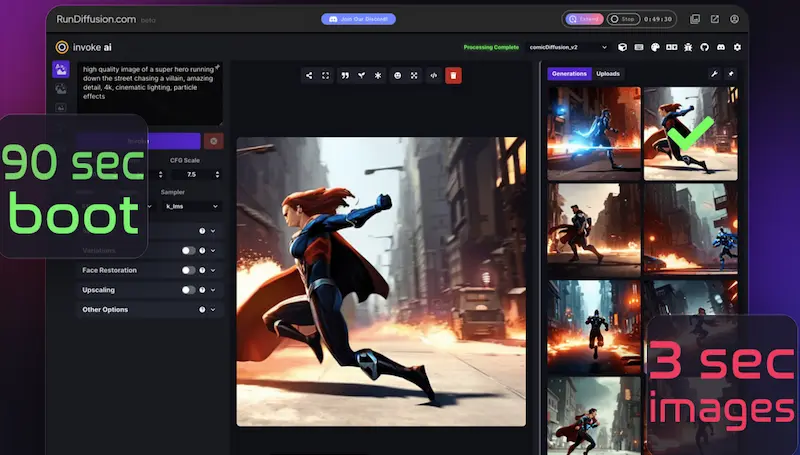
Today, users can create images with the use of pre-loaded models and a cloud-based program called RunDiffusion.
Users can start producing AI-generated art in just 90 seconds after receiving a private workspace because of the fully controlled Automatic in the cloud running on powerful GPUs. The platform can be rented out by the hour.Top Features
- Full managed AI image generation
- Video creation
- Pre-loaded models
- Real-time monitoring
- Dynamic promotions
- Smart timer
- Creator club
Pros
- High-quality content creation: RunDiffusion lets you create professional-grade images and videos, perfect for various industries and creative projects.
- Easy to use: Its user-friendly interface is designed for all skill levels, making navigation and usage simple.
- Budget-friendly: The pay-as-you-go pricing allows flexibility, making it affordable for both small and large projects.
- Efficient workflow: Features like real-time monitoring and dynamic prompts help manage projects smoothly, saving time and effort.
Cons
- Subscription costs: Some advanced features may require a subscription, which can be expensive for some users.
- Learning curve: Advanced tools can be complex for beginners, requiring time to learn and master.
- Internet dependence: A stable internet connection is necessary, which may be a challenge in areas with poor connectivity.’
- Limited customizations: Some specific integrations and advanced customizations may not be supported, restricting certain use cases.
Pricing
The Hobbyist plan starts at$0.50/hour, while the Premium plan starts at $35.9. Visit the pricing page for more information.
G2 Review : Not available
2. MidJourney
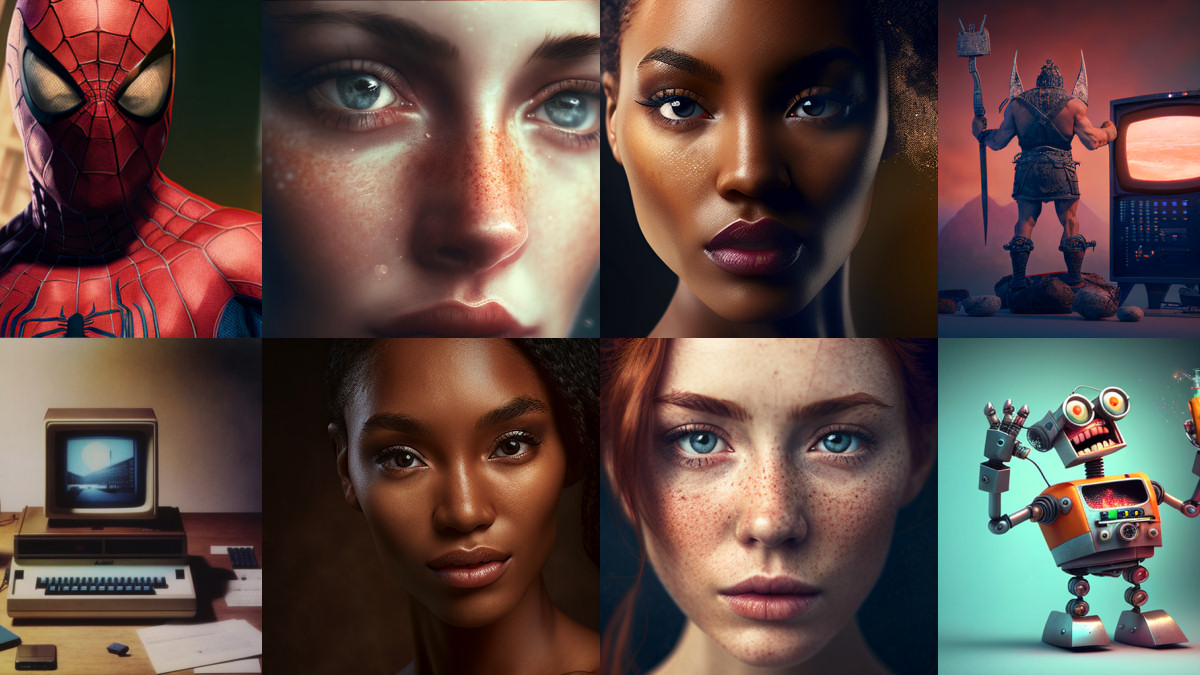
MidJourney is a powerful AI tool that transforms text prompts into detailed digital art, creating visuals in various artistic styles.
It is widely used by creatives and professionals for generating high-quality, unique images suited for marketing materials, social media, and digital design.
The platform requires a Discord account for access, though a recent web app update provides an alternative interface.
Known for its active community, MidJourney offers diverse customization and upscaling features, which help users refine and personalize their generated art.
Top Features
- High-quality image generation across styles
- Active community on Discord for collaborative support
- Prompt-based customization with upscaling and variations
- Web app option for Discord-free access
- Commercial use rights for images, depending on the plan
Pros
- Large, supportive community with tutorials and collaboration
- Diverse artistic styles and flexibility in design
- Accessible pricing tiers, suitable for individuals and businesses
Cons
- Requires Discord, which may not be ideal for all users
- Higher-tier plans are relatively expensive
- Limited trial option for new users
Pricing
MidJourney offers four plans:
- Basic - $10/month with limited Fast GPU time
- Standard - $30/month for more GPU hours and relaxed GPU time
- Pro - $60/month for professionals needing more flexibility
- Mega - $120/month for power users with extended GPU time
G2 Review
Users appreciate MidJourney’s versatility and quality in image generation, though some find the Discord setup challenging.
Most reviews highlight the supportive community and the tool's artistic output as valuable assets for creative projects.
3. DALL-E

OpenAI created the DALL-E neural network to create visuals from textual descriptions. In order to generate visuals that are accurate to the provided description, it combines transformer networks and generative models.
DALL-E, developed by OpenAI, is known for generating highly creative and realistic images from textual descriptions.
It is especially suitable for users needing images that span from photorealistic outputs to surrealistic artwork, accommodating diverse use cases for personal and commercial purposes.
The tool offers editing features to adjust generated images based on user input, which makes it flexible for unique visual requirements.
- Top Features:Generates images from textImage editing and customization optionsHigh-resolution output for digital and print mediaContent filtering for ethical image generationVariations feature for creative exploration
- Pros:Supports style transfer for unique transformationsFast image generation for time efficiencyCustomizable settings for detailed controlOwnership rights for generated images, enabling commercial use
- Cons:Limited in photorealism; best suited for surreal or abstract imagesLanguage limitation; may struggle with complex descriptionsPotential legal concerns with image resemblance to existing art10WebKonsyse
- Pricing:Freemium model: 50 free credits initially, with 15 monthly credits afterward; additional credits at $15 for 115 credits.
G2 Review:
Not directly available on G2, but generally praised for creativity, although users note the cost and complexity in generating precise outputs.
4. CLIP (Contrastive Language-Image Pre-Training)
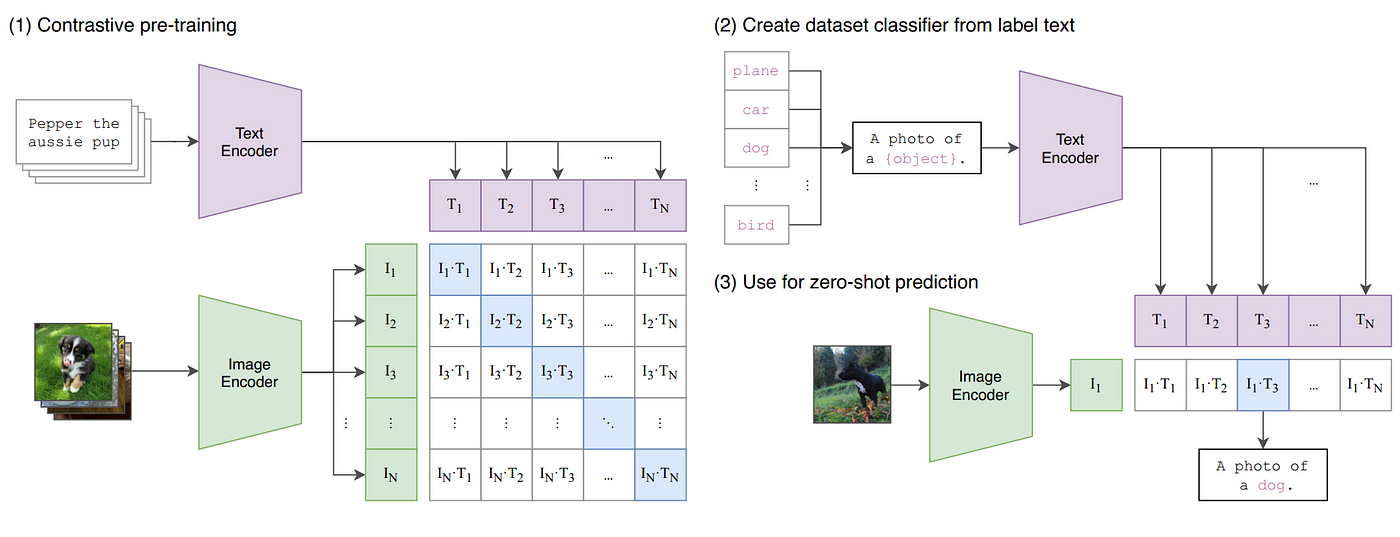
CLIP, another tool by OpenAI, pairs text descriptions with images to find the most fitting matches.
Rather than generating images from scratch, it evaluates and ranks images by relevance to text input, aiding in categorization, search, and object recognition tasks.
CLIP is widely adopted in image classification and understanding the relationships between language and visuals.
Top Features:
- Matches images with text descriptions
- High accuracy in classification and search tasks
- Integrates well with other AI models
- Multi-lingual support for broader applicability
Pros:
- Accurate and efficient in image-text matching
- Ideal for content moderation and search optimization
- Multi-functional for various language-vision applications
Cons:
- Limited to ranking rather than generating images
- Not suitable for users seeking customizable, generated artwork
Pricing:
- Pricing is typically on a custom basis as it’s often integrated with enterprise applications.
G2 Review:
Not widely reviewed on G2, but considered robust for applications needing precise image-text associations.
5. Craiyon
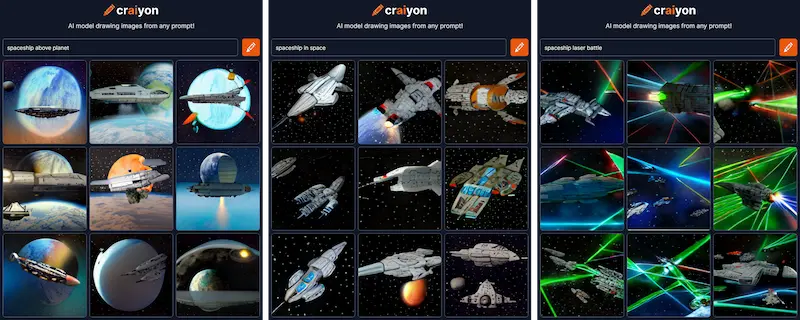
Craiyon, originally known as DALL-E Mini, is an open-source tool inspired by DALL-E.
It allows users to generate images based on textual prompts but offers a more accessible, simplified experience.
Craiyon is a popular choice among hobbyists and those looking for a free alternative, though it lacks the higher-end customization of commercial AI tools
Top Features:
- Free and open-source model
- Text-to-image generation with basic artistic options
- Community-driven improvements and support
Pros:
- Completely free to use
- Simple to navigate, great for beginners
- Offers decent output quality for non-commercial purposes
Cons:
- Limited output quality compared to DALL-E
- Few advanced customization options
- Slower image generation
Pricing:
- Free; no paid plans are available.
G2 Review:
No official G2 rating, but generally appreciated for being accessible and open-source while recognized for quality limitations.
6. Playground AI
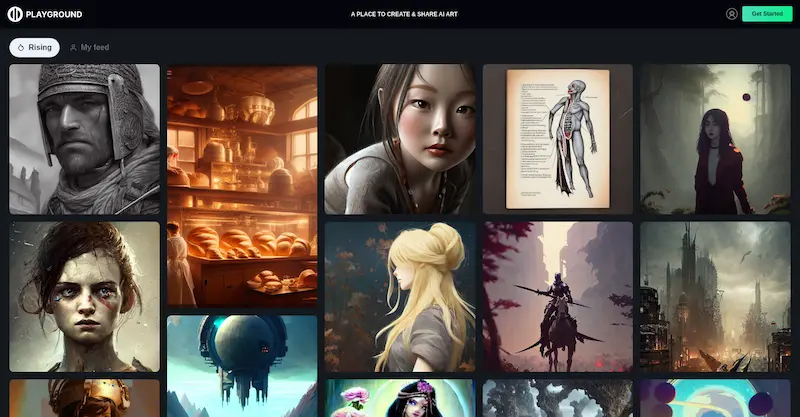
Playground AI is designed for generating high-quality images through user-friendly, adaptable prompts.
Known for its collaborative platform, it offers users access to diverse styles, including hyper-realistic or artistic renderings, making it suitable for marketers, designers, and educators.
With a library of templates and community interactions, Playground AI encourages creative exploration.
- Top Features:
- Broad range of artistic styles and realistic outputs
- Collaborative platform with shared templates
- Supports high-resolution image generation
- Extensive control over visual styles and themes
- Pros:
- Accessible interface ideal for all experience levels
- Quick image generation with adjustable quality settings
- Community templates and designs provide inspiration
- Cons:
- Limited access for free users; paid tiers required for high-end features
- Occasional inconsistency in output quality
- Pricing:
- Offers free and paid plans starting at $10/month for higher quality and customization options.
- G2 Review:
Often lauded for ease of use and diverse styling capabilities, but some users express concerns over high-tier pricing.
7. ArtSmart AI
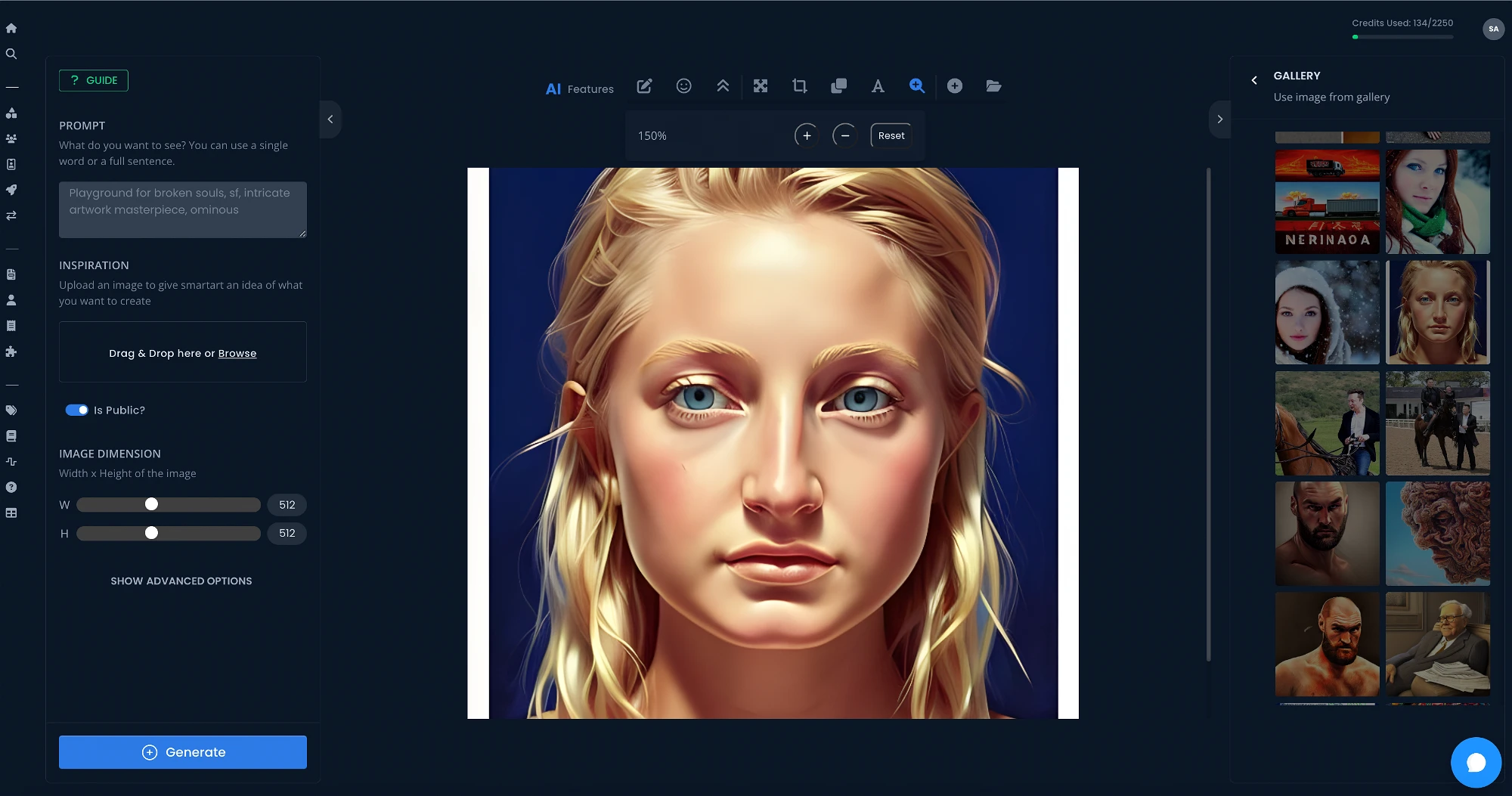
ArtSmart AI is an advanced AI-powered image generator, best known for creating high-quality images suitable for professional use.
It supports a variety of artistic functions, including high-resolution image generation, background removal, and advanced inpainting and outpainting.
ArtSmart is particularly useful for marketers, designers, and e-commerce professionals seeking creative assets for commercial purposes.
- Top Features:Stable Diffusion Model: Allows high-quality image generation from text prompts.Inpainting & Outpainting: Useful for detailed image editing and expanding image scenes.High-Resolution Images: Generates up to 8K resolution images.Background Removal: Ideal for clean, professional visuals.API Integration: Supports integration with other tools.
- Pros:Beginner-friendly interface.Robust feature set for image customization.Supports high-resolution outputs for commercial use.
- Cons:No free plan, only a free trial.Limited use cases for specific features, such as pose manipulation.
Pricing:
- Starts at $19/month with a Standard plan at $29/month. Annual plans are available with discounts.
G2 Review:
- ArtSmart AI is praised for its intuitive design and comprehensive feature set. Some users wish for a more flexible pricing model.
8. GPT-2
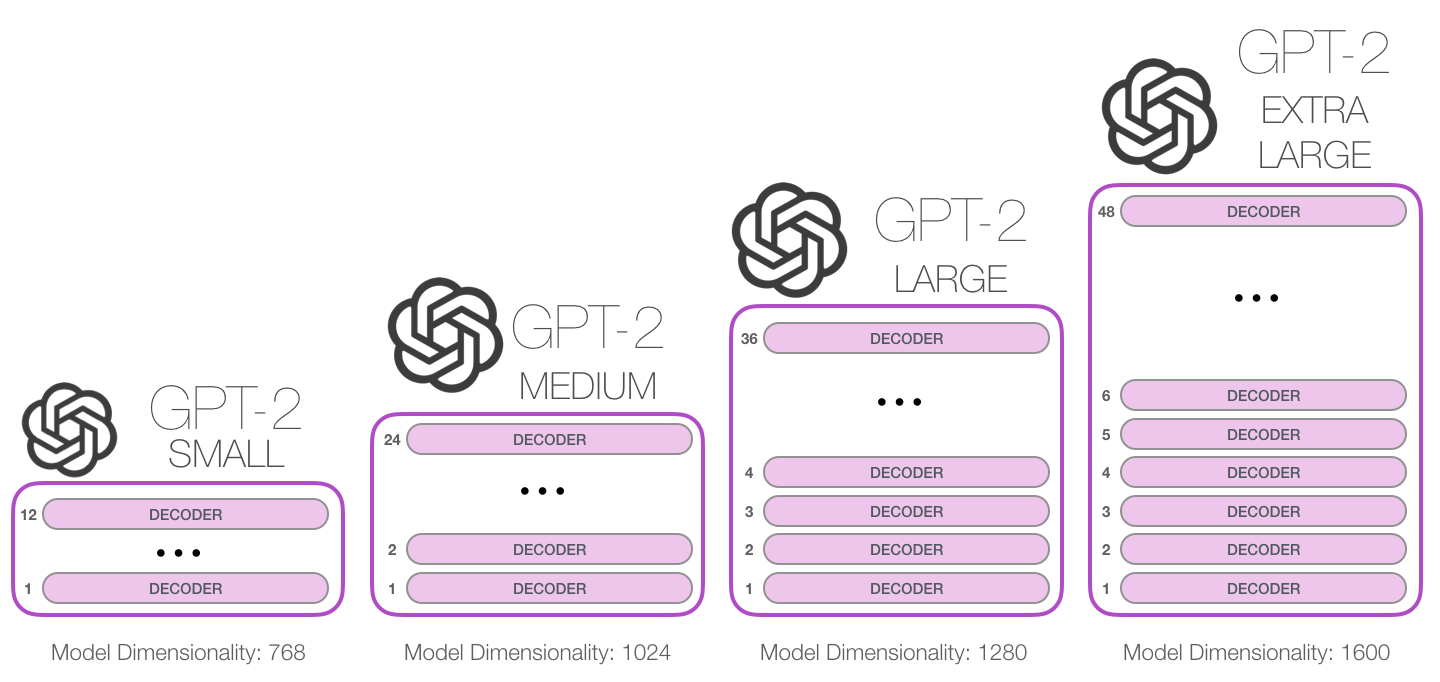
GPT-2, developed by OpenAI, is a large language model designed for generating human-like text.
Though primarily used in natural language processing, GPT-2 is also applicable to various creative tasks, including dialogue generation, content creation, and translation.
While GPT-2 is less specialized in image generation, its language capabilities can serve as a creative tool in broader AI workflows.
Top Features:
- Text Generation: Generates coherent and relevant text based on given prompts.
- Multi-purpose NLP Capabilities: Useful for summarization, translation, and conversation simulation.
- Wide Adaptability: Can be customized with fine-tuning for various tasks.
Pros:
- Versatile across multiple NLP tasks.
- Free and open-source, allowing extensive customization.
Cons:
- Lacks image generation capabilities.
- Requires considerable computational resources for training and fine-tuning.
Pricing: Open-source and free, though usage may incur cloud hosting costs.
G2 Review: GPT-2 is valued for its flexibility in text-based applications but is noted to be resource-intensive when used extensively.
9. Synthesia
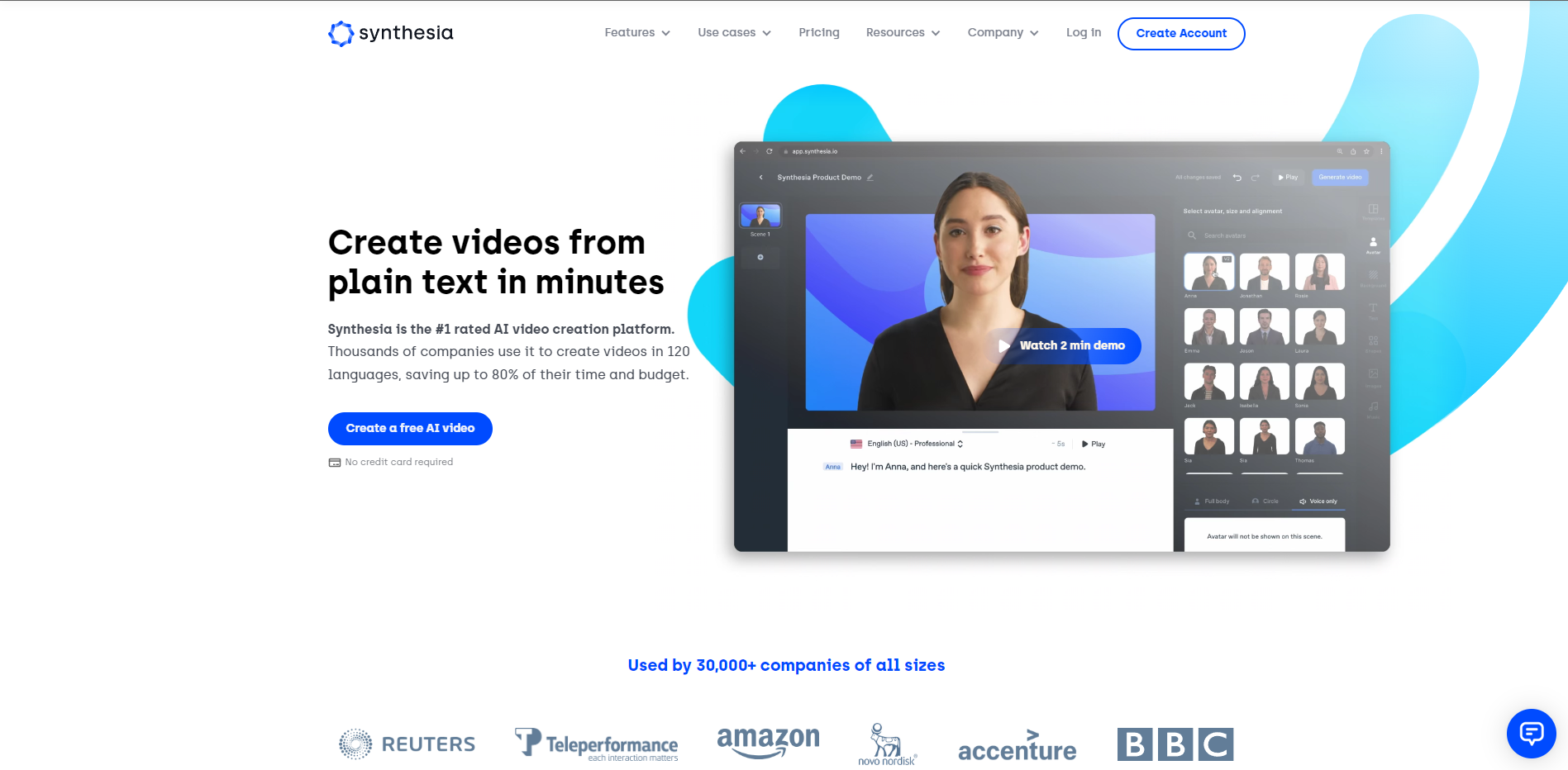
Synthesia specializes in AI-powered video creation. It enables users to create professional-looking videos using AI-generated avatars and realistic voiceovers.
This tool is widely used in business contexts, such as creating training modules, marketing content, and educational videos, without the need for complex filming setups.
- Top Features:AI Avatars: Choose from various avatars to appear in videos.Voice Synthesis: High-quality voice generation in multiple languages.Customizable Video Templates: Makes video production easy for corporate use.
- Pros:Fast video creation without equipment.Wide range of avatar and language options.
- Cons:Limited to specific video templates.Subscription-based model can be costly.
Pricing:
Synthesia’s pricing begins at $30/month for basic plans, with more advanced business plans available.
G2 Review:
Synthesia is appreciated for its quick and cost-effective video creation. Some users would like more avatar and template customization.
10. DALL-E Flow
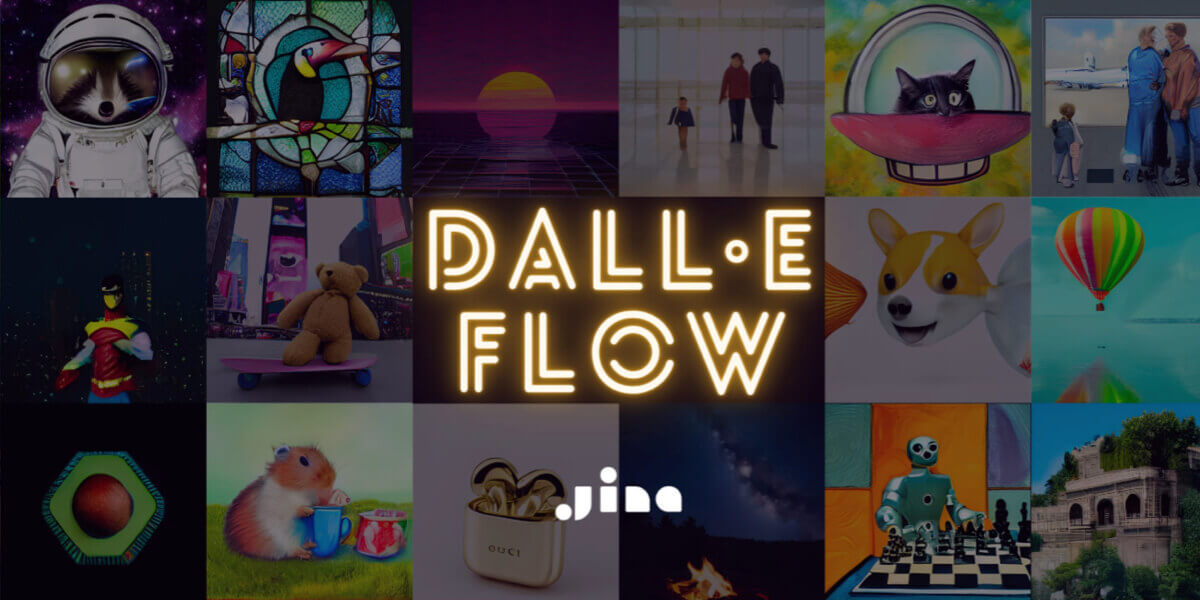
DALL-E Flow by OpenAI builds on the capabilities of DALL-E 2, integrating CLIP-guided diffusion to enable more nuanced and detailed image generation based on text prompts.
It excels in creating imaginative and unique images, catering to creative professionals in art, advertising, and design.
- Top Features:CLIP-guided Diffusion: Ensures highly relevant images based on prompts.Inpainting Support: Allows users to edit and refine specific parts of an image.High-Quality Image Output: Generates detailed and vibrant visuals.
- Pros:Ideal for highly creative and artistic tasks.Flexible for multiple creative uses, including inpainting.
- Cons:High resource usage for processing.Not as beginner-friendly due to complex interface.
Pricing: Available via OpenAI’s API, with pricing based on usage.
G2 Review: Users highlight its unique image generation capabilities but note that it requires a learning curve to use effectively.
Conclusion
So, there are some of the best stable diffusion alternatives that will help you in image processing and computer vision.
Each alternative has its strengths and weaknesses, making it important for researchers and practitioners to carefully consider which technique best suits their particular application.
Ultimately, exploring these alternatives can lead to new and improved methods for enhancing images and analyzing visual data.
Interesting in reading more such amazing information here, check out here!
FAQs
1. What is Stable Diffusion?
Stable Diffusion is a text-to-image model capable of generating realistic images from text descriptions. It is an open-source model that generates detailed pictures using diffusion models.
2. What are the top 10 alternatives for Stable Diffusion?
Writesonic, Jasper, Anyword, Synthesia, Descript, ChatGPT, Colossyan Creator, AI Studios, RunDiffusion, MidJourney, DALL-E, CLIP, and Craiyon are the top ten alternatives to Stable Diffusion, according to G2.
3. How is DALL-E compared to Stable Diffusion in terms of customization?
DALL-E provides better customizing possibilities than Stable Diffusion. DALL-E enables users to create highly configurable and particular graphics based on textual prompts, allowing them to control aspects such as color, shape, and style. Stable Diffusion, on the other hand, concentrates on image generation from given input images, giving less freedom over individual modification possibilities.
4. What are some of the features of Stable Diffusion alternatives?
Alternatives to Stable Diffusion can create visuals based on text descriptions, and some can manipulate diffusion models by adding more criteria. They are useful for a wide range of applications, including image and video processing.
5. Are there any free Stable Diffusion alternatives?
Yes, free alternatives to Stable Diffusion exist, such as ControlNet, a neural network structure that can regulate diffusion models by adding new conditions.

Simplify Your Data Annotation Workflow With Proven Strategies
.png)


